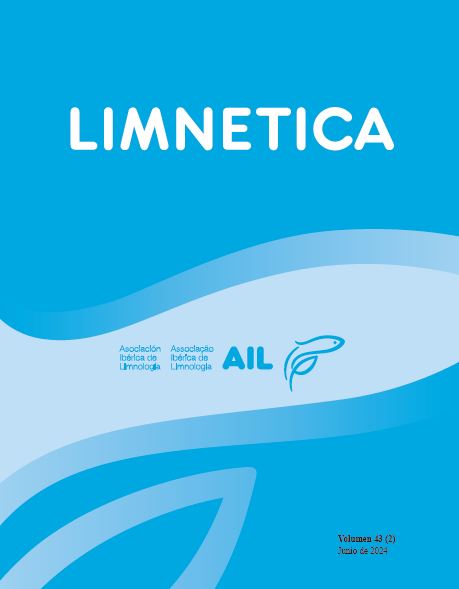Description of three new species of the genus Cobitis L., 1758 (Actinopterygii, Cobitidae) in the Iberian Peninsula
摘要
Three new species, Cobitis almadae sp. nov., Cobitis atlantica sp. nov., and Cobitis mellaria sp. nov. are described on the basis of morphological and genetic traits. Cobitis almadae sp. nov. is restricted to the Sizandro Drainage in Portugal and can be distinguished from other Cobitis species through a combination of morphometric and genetic traits including large and low peduncle depth, lateral ethmoid (suborbital spine) well developed with long narrow mediocaudal, laterocaudal and mediorostral processes, an elongated and narrow frontoparietal fontanel and a wide third Gambetta’s zone sprinkled with numerous black spots. Furthermore, two autapomorphies are found within its mitochondrial cytochrome b gene. Cobitis atlantica sp. nov. inhabits the northern Atlantic rivers of the Iberian Peninsula from the Minho Drainage to the Alcoa Drainage and can be differentiated from other Cobitis species through a set of morphometric and genetic traits including short and high peduncle depth,a well-developed lateral ethmoid (suborbital spine) with short and wide mediocaudal, laterocaudal and mediorostral processes, wide frontoparietal fontanel, and developed ventral pigmentation in adult individuals. In females, the Gambetta’s fourth row has 10-16 blotches reaching the ventral pigmentation in the caudal region and the third Gambetta’s zone is narrow with black spots. Cobitis mellaria sp. nov inhabits the Valle Drainage in southern Spain and is distinguished from other Cobitis species through the following morphometric and genetic traits: low peduncle depth, lamina circularis with convex outer edge, lateral ethmoid (suborbital spine) with short laterocaudal process and large mediorostral process, elongated frontoparietal fontanel, no ventral pigmentation in adults. In females, Gambetta’s fourth row has 10-15 blotches. One autapomorphy is found within the mitochondrial cytochrome b gene of Cobitis mellaria sp. nov.
##submission.downloads##
已出版
期
栏目
##submission.license##
Los autores que publican en esta revista están de acuerdo con los siguientes términos:
- Limnetica está bajo una licencia de Creative Commons Atribución-NoComercial 4.0 Internacional.
b. Los autores pueden establecer por separado acuerdos adicionales para la distribución no exclusiva de la versión de la obra publicada en la revista (por ejemplo, situarlo en un repositorio institucional o publicarlo en un libro), con un reconocimiento de su publicación inicial en esta revista.
c. Se permite y se anima a los autores a difundir sus trabajos electrónicamente (por ejemplo, en repositorios institucionales o en su propio sitio web) antes y durante el proceso de envío, ya que puede dar lugar a intercambios productivos, así como a una citación más temprana y mayor de los trabajos publicados (Véase The Effect of Open Access) (en inglés).


